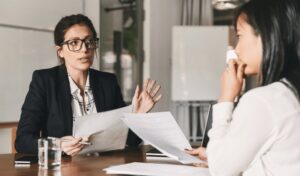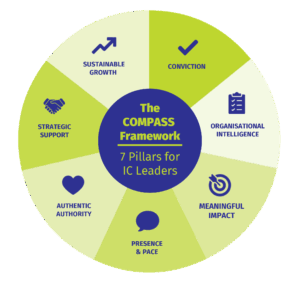One of the biggest mistakes I see in internal communication is assuming that when people question or challenge something, they’re not engaged.
It’s an easy trap to fall into. Someone pushes back on a change or asks awkward questions in a town hall, and leaders immediately label them “difficult,” “negative,” or worse, “resistant to change.”
But often, your most sceptical people are also your most engaged. Their scepticism shows they care. They’re paying attention. And they want things to succeed.
We’ve confused noise with negativity
I saw this recently in an organisation where the leadership team dismissed pushback on a new initiative as “just resistance from the usual suspects.” But they’d got it completely wrong. Those ‘suspects’ were the ones who actually cared. They were invested enough to question the plan because they wanted it to work.
Here’s what happens when we confuse scepticism with disengagement:
- We reward silence and mistake it for support
- We ignore the valuable insight behind tough questions
- We create cultures where people think twice before speaking up
That’s not healthy. That’s dangerous.
Involvement and engagement are not the same thing
There’s some old school thinking that’s still doing the rounds:
Engaged people get involved. Disengaged people don’t.
This thinking is broken in the world we live in today.
People engage in different ways. The one who challenges your strategy might also be the one who’s mentoring colleagues, improving processes behind the scenes, or working late to make sure things land well.
Meanwhile, the one sitting quietly in meetings, nodding along and never raising issues? They might’ve checked out months ago.
Silence is not the goal. Insight is. And we’re missing it when we only focus on participation metrics and positivity levels.
What real engagement looks like
Defining an engaged employee seems to be one of the hardest things for anyone looking at improvement engagement scores – what is it that you want to see from the behaviours and ways of working?
Engaged employees are often the ones not showing up when you want them to. But they’re thinking about their actions and impact, they’re questioning the direction and decisions and they’re connecting things together.
They ask:
- “Have we thought about what this means for customers?”
- “How does this link to our strategy?”
- “What’s the risk here?”
That’s not being difficult. That’s being responsible. It’s someone who’s emotionally and intellectually invested in the success of the organisation and for me, that’s what engagement looks like.
But if you want to find the disengaged? They’ve stopped asking, stopped caring, stopped believing. That’s the real problem. And ironically, they often get less attention because they’re “not causing a fuss.”
Why this matters for internal comms
If we want to shift from chaos to calm in organisations, internal communication has to stop smoothing things over and start surfacing what matters.
Here’s what that means in practice:
Rethink your success measures
High attendance at a town hall doesn’t mean high engagement. You need to look at how people are interacting, not just if they’re showing up.
Create space for questions
Not just the token Q&A slot no one uses. Actively invite the uncomfortable ones (and prepare for them). And don’t punish people, formally or informally, for speaking up.
Listen to what’s not being said
Silence should make you curious, not comfortable. Are people silent because they’re on board? Or because they’ve given up?
Separate scepticism from cynicism
Scepticism is healthy. It says: “I care enough to want this to be better.”
Cynicism says: “It won’t change, so why bother?” We have to find out which one people are, know the difference and communicate differently with each type of employee if we want to reengage them.
You can’t eliminate scepticism, and you shouldn’t try to. But you can create conditions where people feel safe and encouraged to think critically and contribute meaningfully. This means doing the work as a leadership team to improve the communication and the culture.
The most effective organisations aren’t the ones where everyone nods and agrees.
They’re the ones where people feel confident to say, “Hang on, have we thought this through?” And they’re led by people who don’t just tolerate that challenge, they value it.
If you’re struggling with identifying your employees as engaged, sceptical or cynical and want to explore how to improve those relationships – book a clarity call so we can figure it out!
Want to stay up to date with my latest thinking and news? Every week I write about leadership, internal comms and workplace culture. I share stories about my work and advice to help you communicate clearly, lead credibly and build cultures that thrive. You can get on the list here!







